Introduction
This post describes an experiment which explored how the different parts in the process of making and drinking tea can become an activity which promotes wholeness and in how far this modified activity evokes factors of enlightenment (attention, interest, energy, joy, calm and concentration). The result are translated into design criteria for the Magic Tea tea ceremony and prototype.
The contemporary tea drinker
From earlier research it has become clear that the way people make and drink tea already holds a lot of potential for this practice to be linked to transcendent experiences. Some of the factors of enlightenment are already present when people prepare tea the way they usually do. It became clear however that in some contexts making and drinking tea was less wholesome. This had to do with, among other things, the way the tea was prepared, how much time was available, the quality of the tea and the tableware. The participants found that making tea is time consuming. They used shortcuts and practical tools like teabags and water cookers. As media philosopher van der Hoek summarises Marshal McLuhan’s take on technology: besides being extensions media also work as amputations of the senses. If a certain medium strengthens one sense, something else moves to the background. (Wetzels, 2014). This is in sharp contrast to the way the Japanese tea ceremony is experienced. This ceremony has strong links to nature and the seasons, it stimulates all the senses. This way of enjoying tea aims at being a transformative practice rather than an efficient and functional one.
The wholeness of tea
By its very nature natural elements are already embedded in the preparation of tea: water, heat and the tea plant. Are there methods in our culture to bring these elements to life and strengthen them? Can we recreate these implicit qualities in a way that fits our society and technologies? For inspiration we may look again at the work of Christopher Alexander and more specifically at his pattern theory: “Each pattern is a rule which describes a type of strong center that is likely to be needed, on a recurring basis, throughout a particular environment or class of environments.” And “…a system of patterns describing centers which can form the backbone of a new wholeness in a new society.” (Alexander, 2004a). So according to Alexander using patterns appropriately may influence the lives of individuals and society as a whole. From his book A Pattern Language the most suitable patterns for the tea ceremony are: The fire, Pools and Streams and Garden Seat. (Alexander, 1977)
Research questions
This experiments tests if it is possible to strengthen both wholeness and right mind-states (factors of enlightenment) in users during the act of making and drinking tea. The research questions for this experiment are:
- Which actions and objects create more wholeness?
- Which actions and objects best facilitate the factors of enlightenment?
- Is there a positive correlation between these two measurements?
The hypothesis is that the more natural and embodied the method or object the higher the wholeness score. The expectation is that wholeness will correlate positively with the factors of enlightenment.
Method
The experiment looks at four main aspects of making and drinking tea: tapping water, boiling water, the tea itself and the tableware. Participants are presented with scenario’s. To make the scenario’s more embodied video fragments and real life object are used. For each of the aspects they are asked to rank them according to the amount of wholeness the scenario created. For their most favoured choice they are asked to score their mind-state. Comments are optional for each aspect.
Protocol

At the start participants fill in a baseline measurement which assesses their current mind-state. This includes most of the factors of enlightenment (attention, interest, energy, joy, calm and concentration) and the control variables stress and relaxation. They can score on a five point likert-scale ranging from 1 (not at all) to 5 (very much).
The first scenario is tapping water. The scenario consists of a video compilation containing seven clips with an average length of 20 seconds. The clips contained footage of tapping water from a source, a well, a pump, a bowl, a bottle of mineral water, a decanter and a tap. In every clip running water was clearly visible.
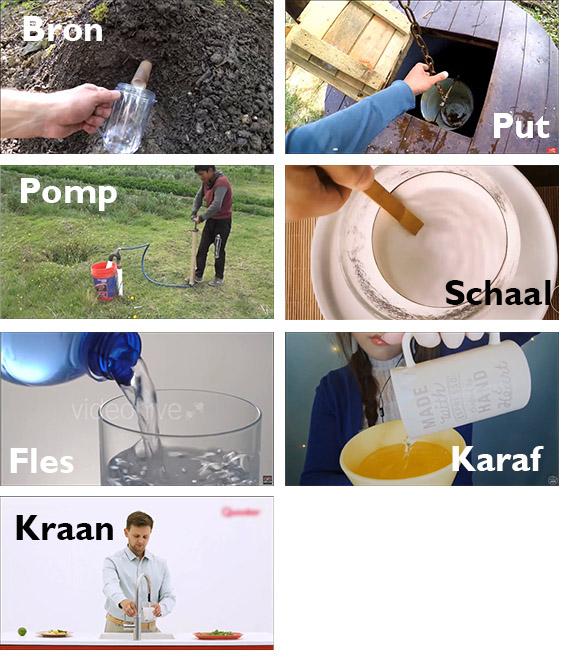
After watching the compilation participants sorted cards containing a screenshot of the video. (Fig. 2) They were asked: Which of the examples of tapping water made you feel a complete human, gave you the strongest feeling of liveliness? They could make a remark or continue to score the factors of enlightenment (mind-state). They were asked: Imagine that you are going to tap water in you most favoured way how much of each mind-state do you expect to be present when you tap water in that way? They could make a remark or continue to the next section.
The next scenario is boiling water. The scenario also uses a compilation video but with six clips with a duration of around 25 seconds each. The different boiling methods presented were: fire, a gas stove, an immersion heater, an electric kettle, a Quoocker tap and a vending machine. Participants had to sort the cards again and fill in the mandatory questions.
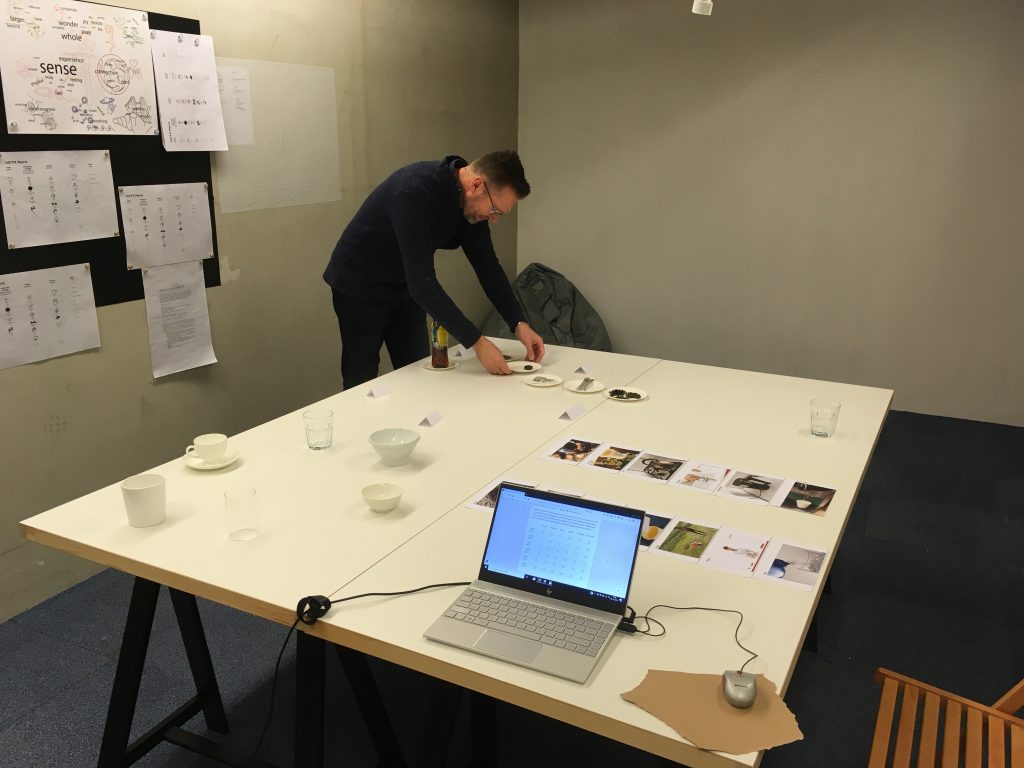
For assessing the types of tea participants are presented with six samples of tea. The tea is displayed on a cardboard plate. They are arranged in a circle and participants had to sort them by moving the the plates into a line (Fig. 3). Participants are invited to touch and smell the tea. The options are: ice-tea, a tea stick, Puerh (pressed tea), Matcha (powdered tea), teabags (containing organic tea), tea leaves. After sorting they answered the same questions.
The last scenario tests the tableware. Six types of tableware are arranged in a circle (Fig. 3). All items are either white or of colourless glass. Presented are: a traditional cup and saucer, a small bowl, a big bowl, a mug, a heavy glass and a thin glass. Participants are again invited to hold the objects and pretend to drink from them. After sorting they answered the questions.
A final question to the participants is to imagine and describe their most ideal tea moment. Their story was written down by the experiment leader to make it easy to visualise and associate.
Results
In total eight participants took part including the designer/researcher. The group consisted of six women and two men with ages between 19 and 60. The results are assessed in a quantitative way: which methods and objects created the most wholeness and which was the prevailing mind-state when imagining making and drinking tea in this way. But also in a qualitative way by analysing the remarks for each scenario. For analysis a word cloud was generated (Fig. 4) and a word count was used to define the main themes.
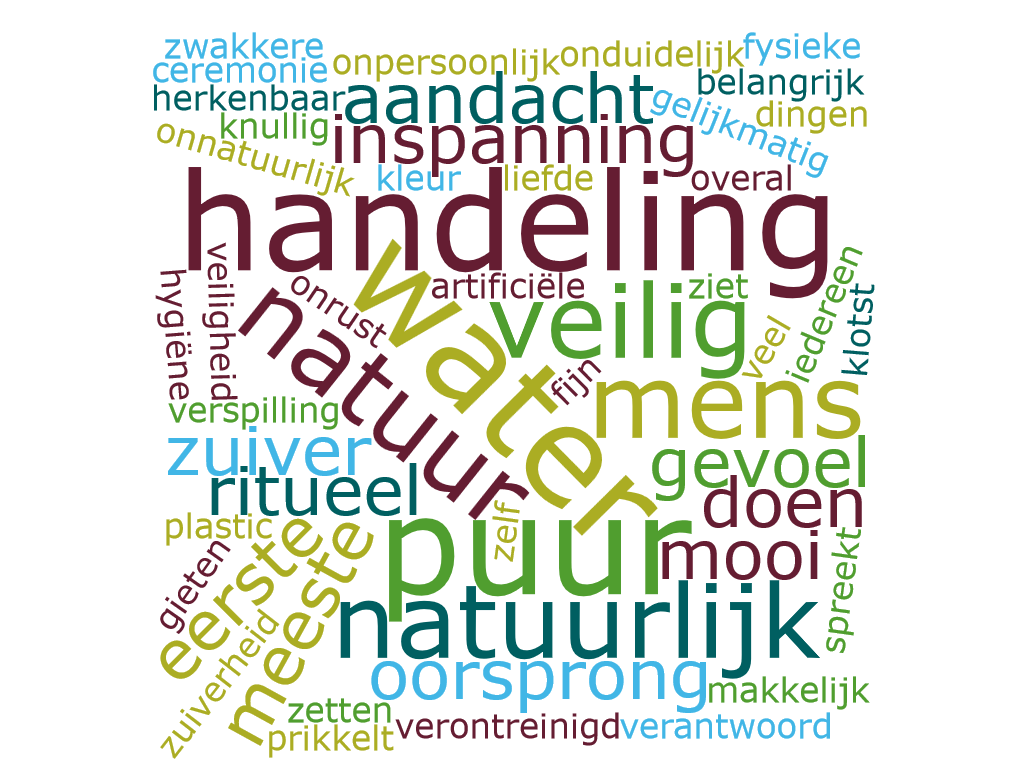
To determine the scenario’s which created the most wholeness in participants all scores were recalculated: the first choice got 7 or 6 points, depending on the amount of choices, the last 1 point. The points were then multiplied by the number of votes. The results for each aspect are shown in graphs below.
Tapping water
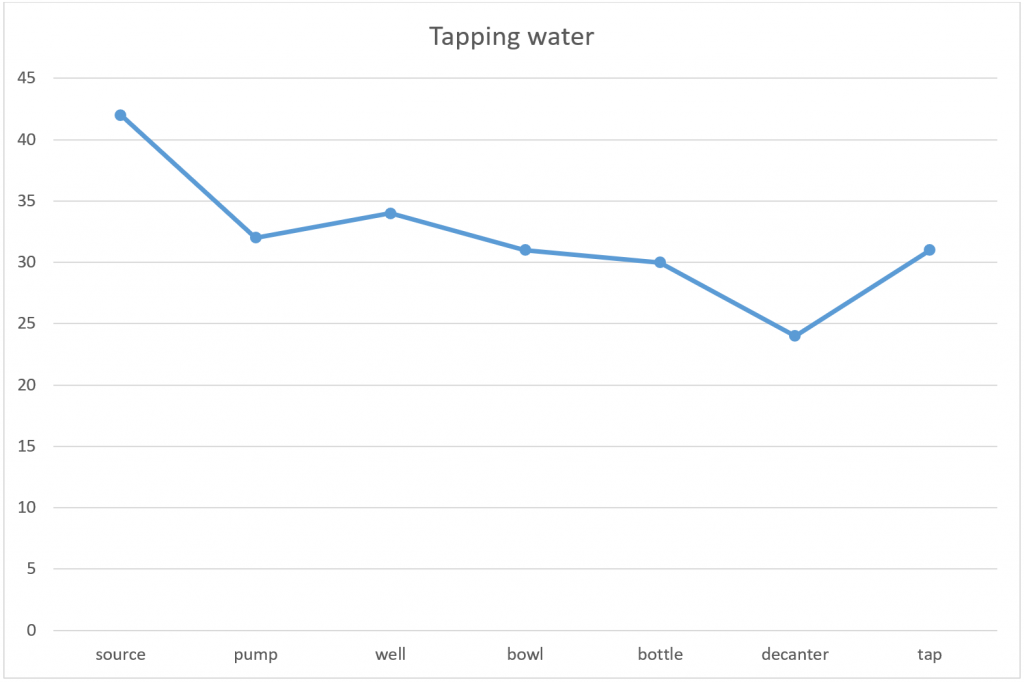
Water from a source created the most wholeness in the participants. Some participants were worried about the safety but eventually the purity and naturalness of the tapping water (source, well) was more important to them. Practicality and hygiene were reasons for the tap, bottle and bowl to score relatively high. The actions executed also play an important part in determining wholeness. They may be more ritualistic (bowl, well), calming (source) or be too active (pump) or too elaborate (bowl).
Boiling water
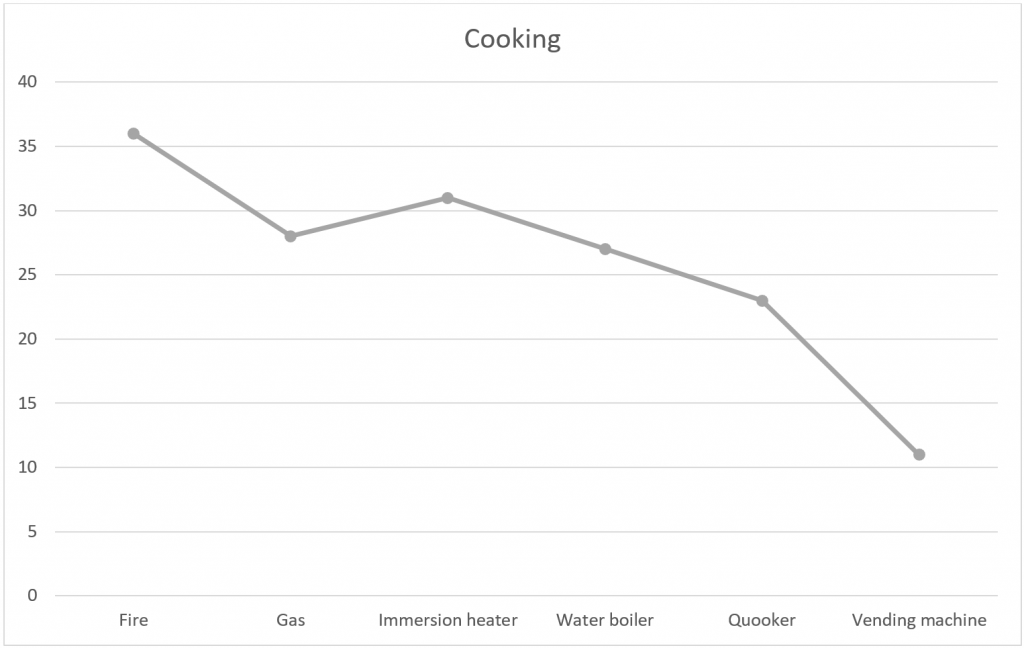
All participants choose boiling water on a fire as the most wholeness inducing scenario. There is a clear downward trend where the vending machine scored lowest. The immersion heater came second because participants enjoyed the slowness and the transparency of the process. Again participants found it hard to make a choice between the know and practical (electric kettle) and the adventurous and pure (fire).
Types of tea
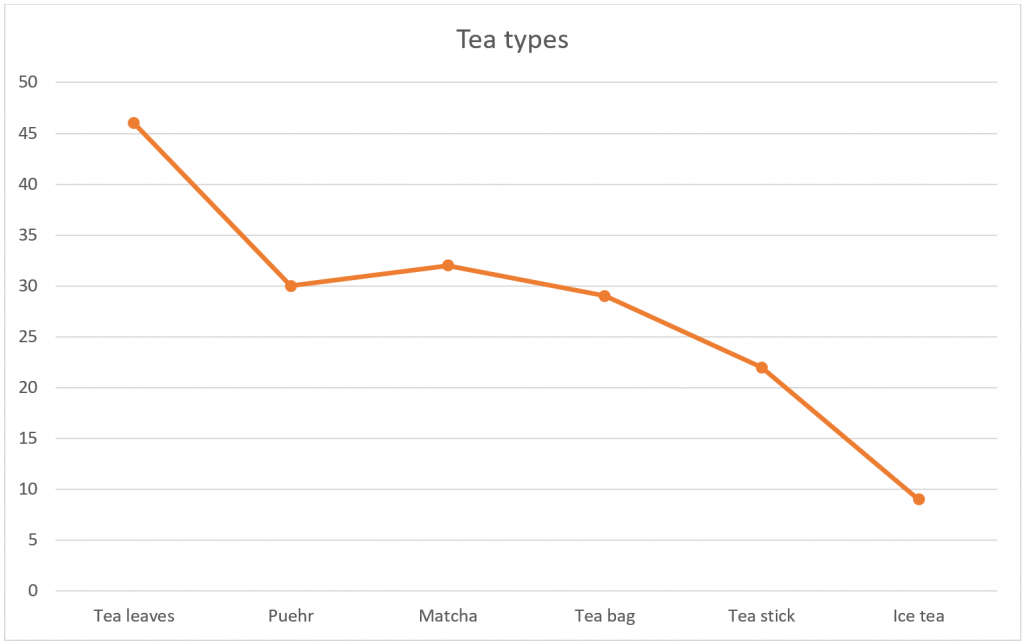
The tea leaves are rated highest on wholeness. Again the trend clearly shows that the more processed and unnatural the product the lower the wholeness score. Participants were unfamiliar with the more exotic teas (Matcha, Puerh) but they still ended as second and third choice because they looked natural and unprocessed. The origin of the teas (is the tea organically produced) is also deemed important. The visual aspect of the tea is very important. The unknown is fascinating to the participants.
Tableware
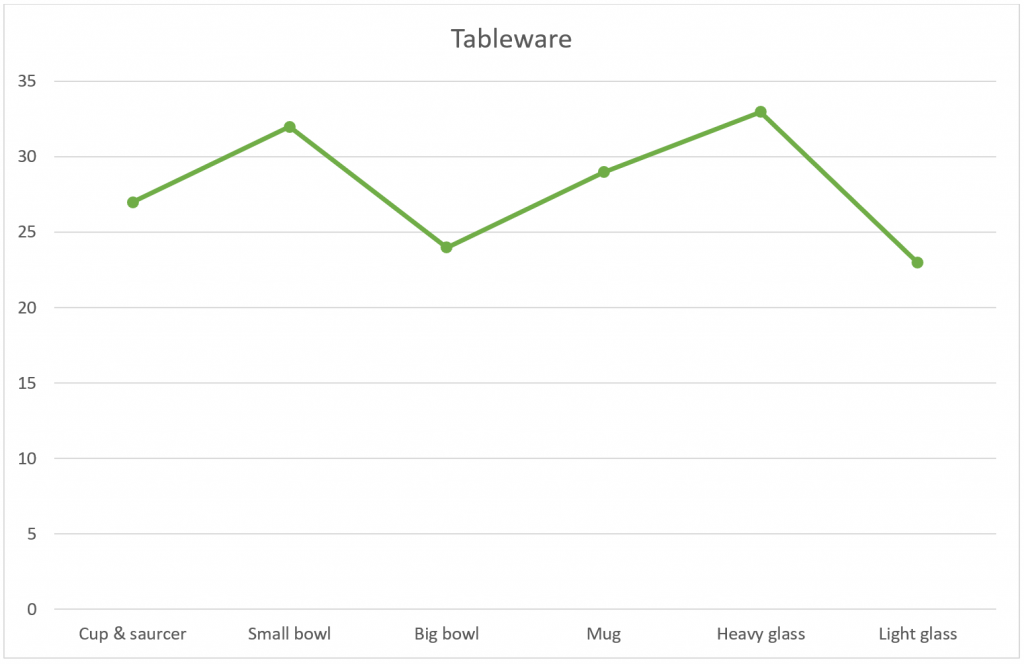
The scores on the wholeness of the tableware are very mixed. The heavy bowl for example is chosen three times in the top two but also three times as the last choice. The small bowl, the complete opposite to the heavy glass with regards to material and the way it feels came in second. There is no clear difference in naturalness between the items as was the case with the other scenario’s. Participants explained that associations, the weight of the object, container size, safety (fragility, heat) and transparency (seeing the colour of the tea) were the most important considerations.
Factors of enlightenment & mind-states
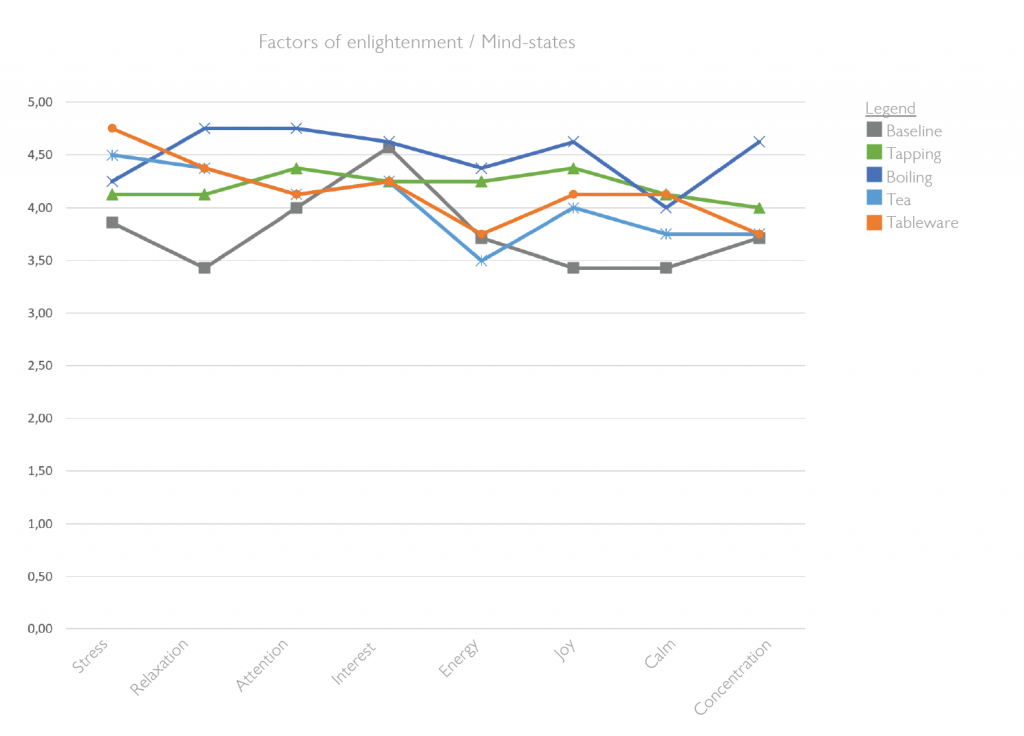
The baseline measurement (in grey) shows the highest stress values compared to the other aspects of the activity and objects (Fig. 9). Highest because contrary to the other aspects 1 stands for very much and 5 indicates not at all. Interest is also high. Participants are excited and curious to start the experiment.
Tapping water using the method which creates the most wholeness (top 3: source, well and pump) doesn’t show any extremes but is the most influential after boiling and higher on all factors then the baseline except for interest. Energy, joy and calm show the biggest difference to the baseline.
Boiling water using fire has the most effect on wholeness compared to baseline and overall. Participants do find it more stressful then tableware and the tea and also less calming then tapping water and the tableware. Fire can be dangerous so those scores are understandable.The type of tea (top three: tea leaves, Matcha, Puerh) are relaxing and spark attention and interest but scores below baseline on energy.The results for the tableware (heavy glass, small bowl) are comparable. But it does create more feelings of joy and calm compared to baseline.
Remarks
Participants made a lot of remarks on all the aspects. Those were used above to explain the scores. Due to lack of time only six of the eight participants were asked to describe their ideal tea moment. The main themes were: a sense of comfort, the warmth of the tea, connection with nature or cocooning indoors and the pleasant way in which the senses are stimulated.
Design criteria
Both quantitative and qualitative data were used in formulating design criteria for each of the aspects of making and drinking tea.
- Tapping water Water should flow, it should be still, safe and visible. Tapping the water should require some quiet action. Water shouldn’t be wasted.
- Boiling water The process of boiling water may take some time (more then a Quooker) but not too much (fire). Water should be visible while cooking, the process of cooking must be transparent (no black-box). The process should be natural and smooth but not too slow (is stressful).
- Types of tea Tea should be natural (organic and unprocessed), should be beautiful, may be unknown and evoke curiosity. A practical way of preparing tea is preferred.
- Tableware The container should allow one to feel the warmth (feedback) but not to hot to handle. One must be able to enclose the whole cup with your hands (no handle), tea colour must be clear, some weight is preferred, a small cup may be used for a special taste experience.
Conclusion
This experiment explored if the different parts in the process of making and drinking tea can become an activity which promotes wholeness and in how far this modified activity evokes factors of enlightenment. The experiment looked at four main aspects of making and drinking tea: tapping water, boiling water, the tea itself and the tableware. Users were presented with more of less embodied scenario’s. Wholeness and the factors of enlightenment were assessed using questionnaires. Optional comments gave more insight into the motivation of choices and the participants’ ideal tea moment.
For most aspects it was clear which scenario created the most wholeness in the participants: the source for tapping water, fire for cooking and tea leaves for making the tea. As hypothesised those were the actions and objects which were most natural and pure. Because there was no such distinction in the tableware the scores were mixed and depended on other, more embodied factors. The two opposing high scores (heavy glass and small bowl) may both be used to start prototyping. When asked to imagine making and drinking in the way that created the most wholeness almost all the favoured scenario’s ended above baseline with regards to the factors of enlightenment, stress and relaxation. This seems to indicate a positive correlation between the two. Only interest scored below baseline for some aspects but interest was very high to start with.
From the clear results design criteria were created. Ways will be explored to implement them in a safe and practical way which also honours the participants ideal tea moment.
Discussion
It became immediately clear that participants found it hard to understand what was meant by the question which probed wholeness. Throughout the experiment they found it hard to separate the wholeness from the fact that the method or object was practical and well-known. The experiment leader had to explain and give examples on several occasions. An alternative could be a step by step mirror-of-the-self-test (Alexander, 2004a) in which participants keep comparing two scenario’s the until they find the most wholeness promoting option. This would give them more time to reflect and look into themselves.
Even though the results were mostly clear presenting the scenario’s in a more embodied and multi-sensory way might have had stronger effects. In the case of the tableware tea could have been served. Adding for example a disposable cup would have introduced the element of unnaturalness and made the choice of scenario’s more in line with the others.
References
Christopher Alexander, Sara Ishikawa, Murray Silverstein with Max Jacobson, Ingrid Fiksdahl-King, Shlomo Angel. 1977. A Pattern Language : Towns, Buildings, Construction. New York, NY: Oxford University Press.
Alexander, Christopher. 2004a. The Phenomenon of Life (Book 1). The Center for Environmental Structure, California. Chapter 8
Alexander, Christopher. 2004b. The Process of Creating Life (Book 2). The Center for Environmental Structure, California. p. 345
Wetzels, Hans. 2014. De extensies van de mens. De groene Amsterdammer https://www.groene.nl/artikel/de-extensies-van-de-mens (accessed 15-3-2020)
In collaboration with: Avans University of Applied Sciences, Centre of Applied Research for Art, Design and Technology (CARADT)
Leave a comment